Stretching for blocks closed to traffic in the centre of town, the end nowhere in sight.
A swath of colour, brightly dressed Zapotec and mestiza shoppers and a cornucopia of goods overflowing from stalls, open to the sun or tarped with faded umbrellas.
Crowding in among creates of freshly picked produce (the tomatoes!), clay pottery, wire cages of live chickens, tables laden with hand-forged tools, vibrant aprons, trays of dried chilies, bags of chocolate-covered grasshoppers, children’s clothing on small hangers, hats rimmed with embroidered flowers, wood carvings, baskets woven from vivid strips of shiny plastic, racks of pirated movies and electronics…
Sellers, buyers and traders intermingling, the air abuzz with energy, a cacophony of chatter and laughter.
Smoke curlicuing from hot grills, filling the air with the tempting smell of grilled meat and fried onions, a dish they call tasajo.
What a festive atmosphere! “Very rural and authentic, so different from the markets in Oaxaca,” was Magellan’s reaction. Karol had the perfect word: “Overwhelming.”
And what was our shared takeaway from one of the oldest, largest (more than a thousand vendors!), busiest, continuous markets in Mesoamerica, the Sunday market in the Oaxacan valley town of Tlacolulu (population less than 500 people)?
We all agreed: “The women are incredible.”
Mostly, they’re the ones “(wo)manning” the stalls.
“Working, but dressed in their Sunday finery,” as Gail says.
A powerful sense of agency emanates from these women, in their storied faces, measured presence and colourful ensembles.
“Photo?” I asked about two dozen women.
It’s tricky.
I get it, knowing some don’t want to be photographed by tourists, others don’t mind, and a few sternly finger-wave no to a request.
Speaking Spanish is helpful. We don’t. Having a guide makes it easier. We didn’t. Asking for her photograph after you’ve made a purchase from her is more genuine. We were primarily observers (except for the delicious lamb barbacoa).
Professional photographers have addressed this dilemma. Minor White: “One should not only photograph things for what they are but for what else they are.” (Emphasis is mine.) Cartier-Bresson: “You must be on the alert with the brain, the eye, the heart…” Louis Baltz: “…the subject of the photo is the person looking at it.”
At this traditional market where locals come to sell, shop and socialize, I was particularly attracted to the women’s floral head scarves, mascadas of varied and intense colours—they didn’t appear to be homemade.
I’ve since read they’re especially popular among the women from the nearby town of San Bartolomé, they are factory-made—and how they’re worn sends a strong social statement.
Zapotec women traditionally wore shawls in a certain way according to their marital status. But when the men migrated to other places to work as farm labourers, they began sending their wives, daughters and sisters head scarves, or bringing them home as gifts when they returned. The women began to prefer headscarves—breaking with the wearing of traditional shawls—which makes it impossible now to distinguish the marital status of a woman from San Bartolomé. Emancipation—especially for the growing number of women in unmarried couples and single mothers.
Gail was most attracted to the women’s mandiles, pinafore-style aprons. The women’s aprons, brightly coloured or gingham-checked, were most always personalized with lace or machine-embroidered flowers in different sizes, colours and combinations.
The aprons worn by local women differ from the ones for sale for tourists.
Local women prefer synthetic materials that are lighter, don’t wrinkle and are inexpensive. Tourists are usually looking for a handmade apron in organic cotton with a traditional and elaborate style. And they’re willing to pay the price.
At the Tlacolulu Market, you have your choice of both.
“The women of the Valleys of Oaxaca have learned to know the interests, tastes and language of the non-indigenous, urban and tourist clientele, for the commercialization of their products…They produce for the market what the market wants,” writes Patricia Arias.
Eufrosina Cruz Mendoza, Mexico’s first-ever Indigenous woman elected to the Oaxacan state congress (2007) and then to Mexico’s Chamber of Deputies, when asked whether these women’s work is empowerment or slavery told Anya von Bremzen, “Oaxaca’s Central valleys with their markets and crafts, they’e seen as some sort of open-air living museum…Write this down, Anya,”La mujer indigena can be empoderada, chingona, y valiente‘—empowered, badass, and brave!”
While Tlacolulu has the largest market in the area, you can attend one in a different town in the Oaxaca Valley every day of the week—and likely see many of the same women selling their tortillas, produce, aprons or whatever. They’re busy!
At Granville Island Market this weekend, I looked at people taking photos. Mostly selfies, one hand holding up a box of Lee’s Donuts (there’s always a long wait), or shots of their friends in front of Oyama Sausage (yum). It’s a bustling market and one of my favourite places to be in Vancouver. But for people watching, pale as a slice of store-bought white bread compared to the Zapotec women at Tlacolulu Market.
Navigation
Arias, Patricia.”From the shawl to the scarf. The reinvention of indigenous clothing” Encartes, Vol 2 No 4 (2019): 175-194. Patricia writes, “The women of San Bartolomé Quialana have reinvented their way of dressing by appropriating industrial products and materials that they have redesigned according to their tastes, senses, living conditions and changes that have affected them in recent years. The information is based on tours, observation, conversations and interviews with women, producers, merchants and consumers, carried out in January 2019 in the tianguis of Tlacolula, in San Bartolomé Quialana, Magdalena Teitipac and San Marcos Tlapazola. It is also based on preliminary information from household surveys applied by the Mexican Migration Project (mmp) in January 2019 in four communities of the Central Valleys of Oaxaca: Magdalena Teitipac, San Bartolomé Quialana, San Lucas Quiaviní and Santa Ana del Valle.”
Carpenter, Tim. To Photograph is to Learn to Die. Loa Angeles: The Ice Plant, 2022. “I am a man with a heart that offends with its lonely and greedy demands,” a quote from Sufjan Stevens, is how Tim begins his book, a gift from Lynn for Christmas this year. A book that “rewards those who defiantly embrace the idiosyncrasies and shortcomings that lend us our essential individuality,” as a reviewer says on the back cover.
Von Bremzen, Anya. National Dish. New York: Penguin Press, 2023. The quote above from Eufrosina Cruz Mendoza, Mexico’s first-ever Indigenous woman elected to the Oaxacan state congress, is from the chapter “Oaxaca, Maize, Mole, Mezcal. “

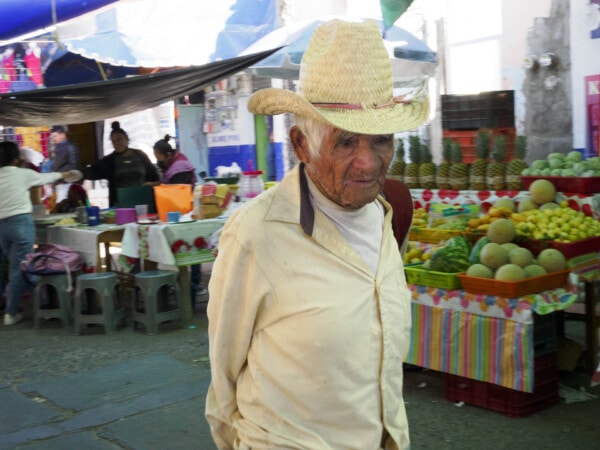




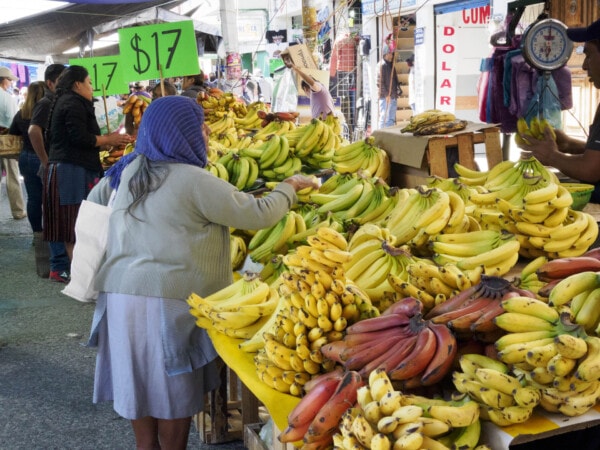




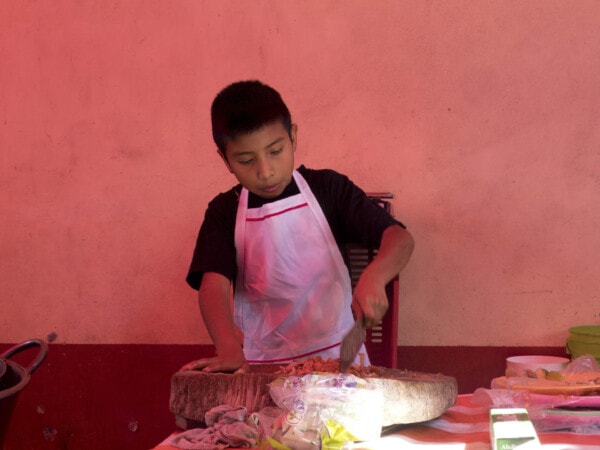



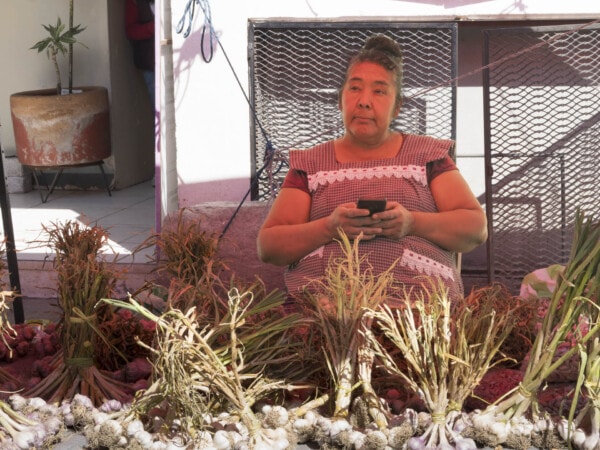











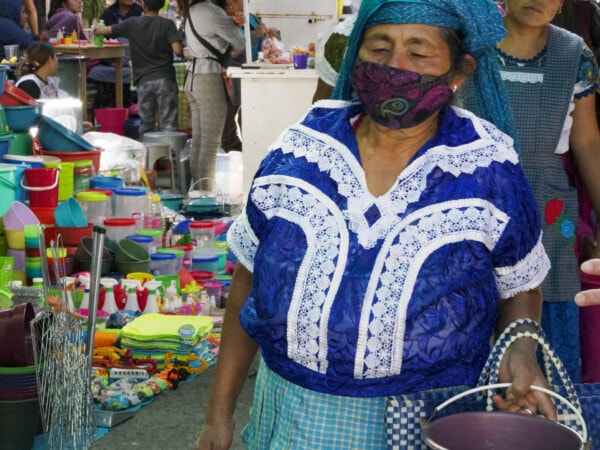
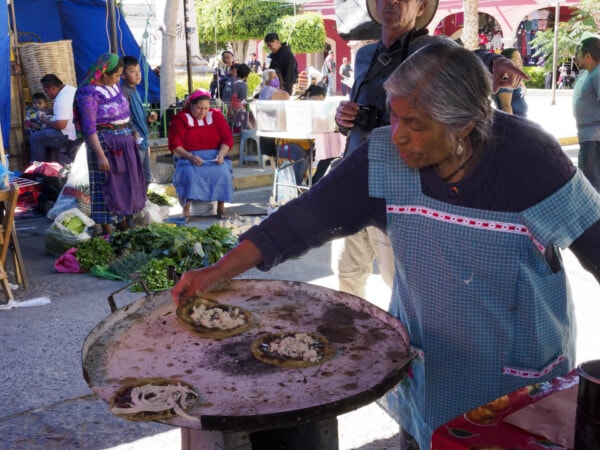

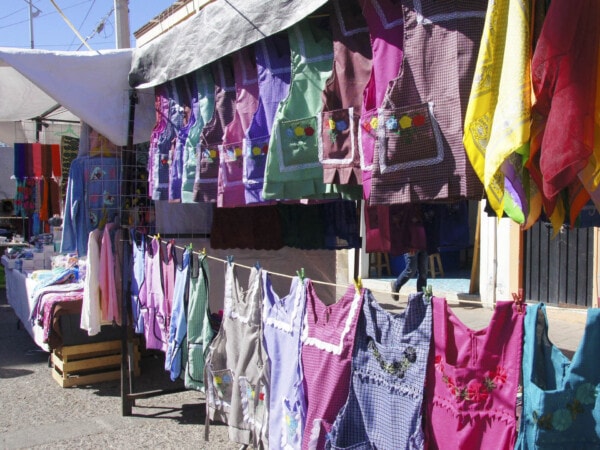






7 Responses
Well done! This brought back so many great memories of our trip. I loved all of the colours, smells and the faces of the people.
Karol
Thanks Karol. It was a great experience.
Looks like a wonderful place to shop for fresh veggies, if you know what your getting or want.
Looks like everything is available.
Clothing is extremely colourful and comfortable looking.
Nice story.
Thanks Barry. Yes, isn’t it a solid strip of vibrant, community life? It really made me wish that we had a kitchen.
I love markets, this one looks really fabulous. There is nothing like buying fresh. 😊
Did it remind you of the Sunday market at the College of the Desert?
This market looks better.